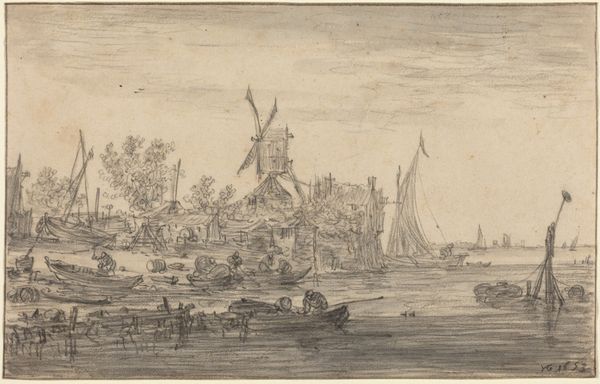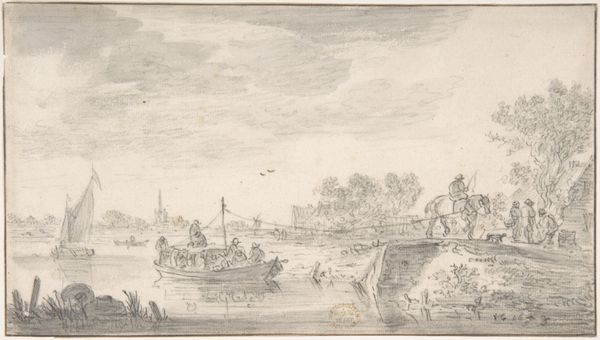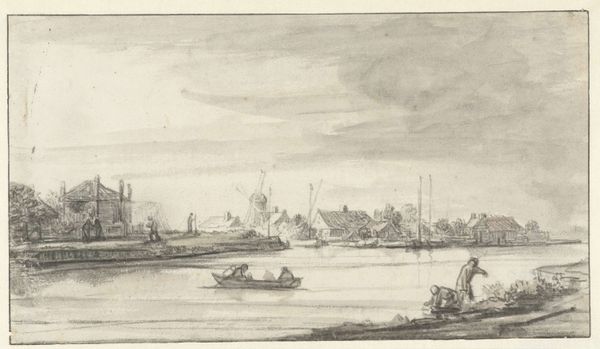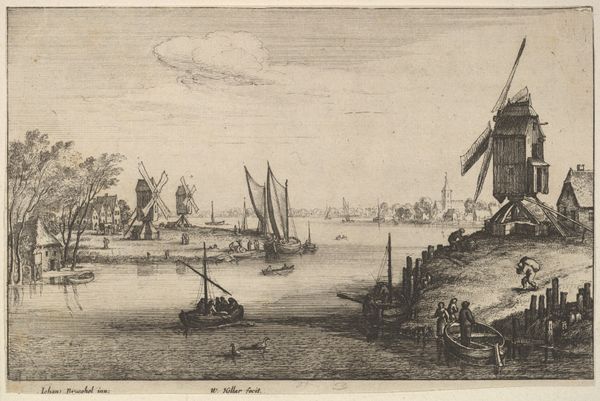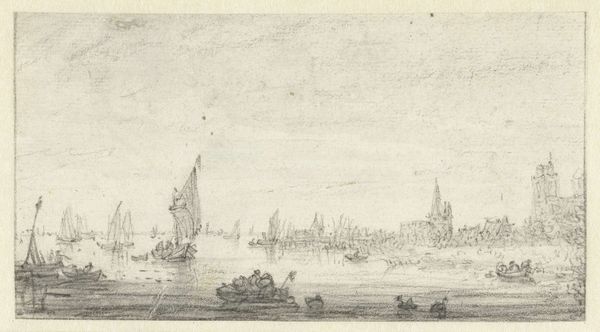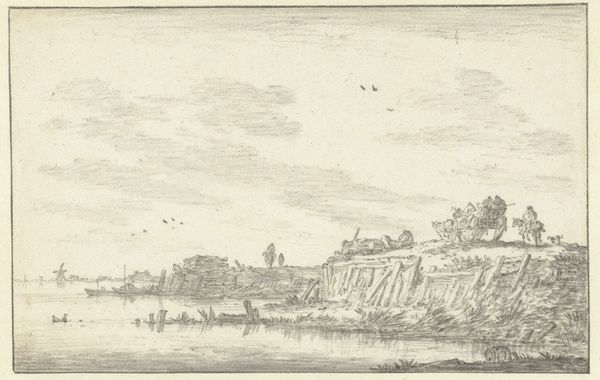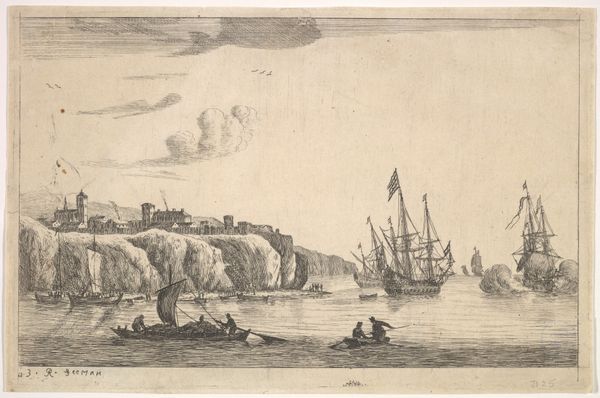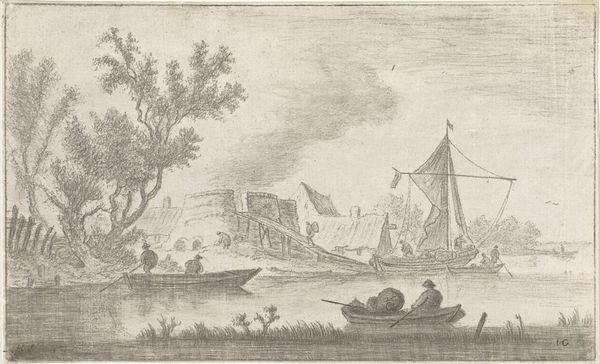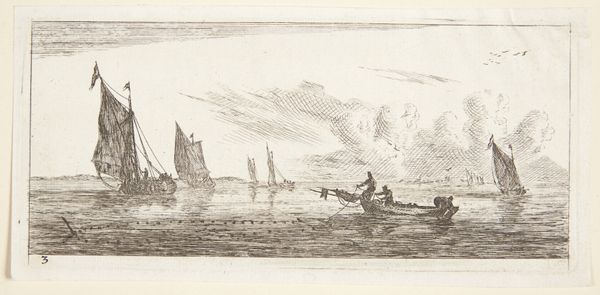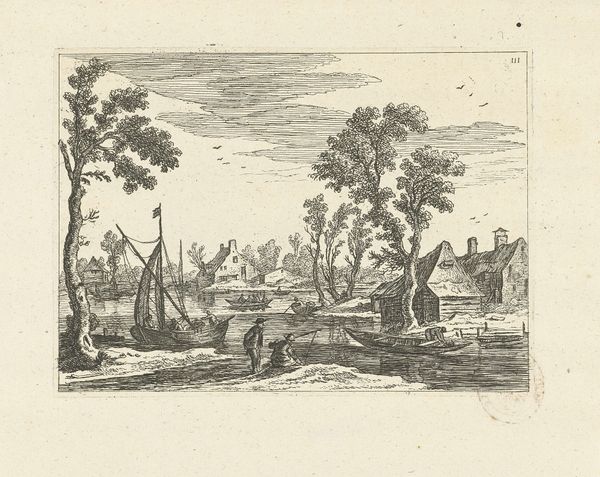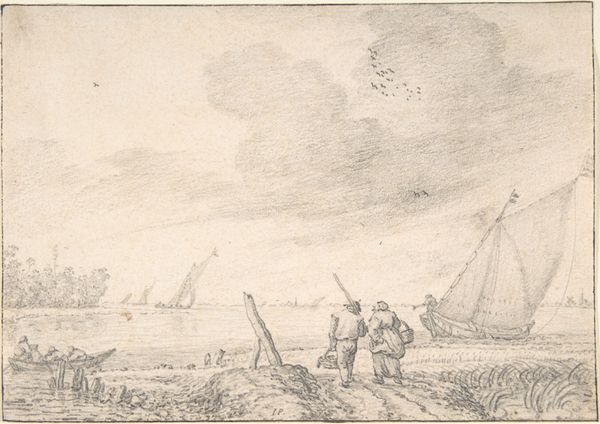
drawing, print, etching, ink
#
drawing
#
boat
#
dutch-golden-age
# print
#
pen sketch
#
etching
#
pencil sketch
#
landscape
#
ink
#
sea
Dimensions: 7 3/8 x 11 3/4 in. (18.7 x 29.9 cm)
Copyright: Public Domain
Curator: Before us is Jacob Esselens’s "Coast Scene," thought to have been created sometime between 1626 and 1687. It is currently held at the Metropolitan Museum of Art. The piece employs etching and ink. Editor: There's a beautiful simplicity to this piece; the understated composition makes it incredibly tranquil. The inkwork evokes such softness and airiness in the sky. Curator: Dutch Golden Age landscapes frequently depict the flat, expansive terrain, emphasizing human activities within this environment. In that era, we also observe shifts within labor and trade systems and social relations between individuals. I wonder how the fishing industry shaped this society? Editor: Yes, and that labor is immediately present: this scene offers a glimpse into the fishing economy with all its specific processes and implements. These details reflect how communities were fundamentally shaped by these very concrete actions—boat-building, hauling, and distribution, and trade, both within and beyond the area in the etching. Curator: Absolutely, it makes me consider broader socioeconomic systems. The role of the artist as observer is also pertinent here. Were the laboring classes allowed to define the aesthetic value of their own work? Can they participate in what comes to be defined as visual culture? These figures standing on the banks, and in the boats, seem very occupied with material practices. What power did they possess in society at the time of its creation? Editor: The scale suggests more emphasis is being placed on landscape, with people almost like extras or props... it could be useful to see if he made paintings. Was he just sketching and etching, or doing larger studio works. And for whom? How did he receive payment for it? Curator: Considering the social context of art, it brings up these important inquiries related to power, access, and cultural participation. We can ask questions about how our cultural institutions choose to place value. Editor: Indeed. Looking at the finished product only reveals the last stage of its becoming. Esselens’s "Coast Scene" encourages me to wonder about where art resides, and perhaps, more importantly, about the work and commerce from which culture is grown.
Comments
No comments
Be the first to comment and join the conversation on the ultimate creative platform.

